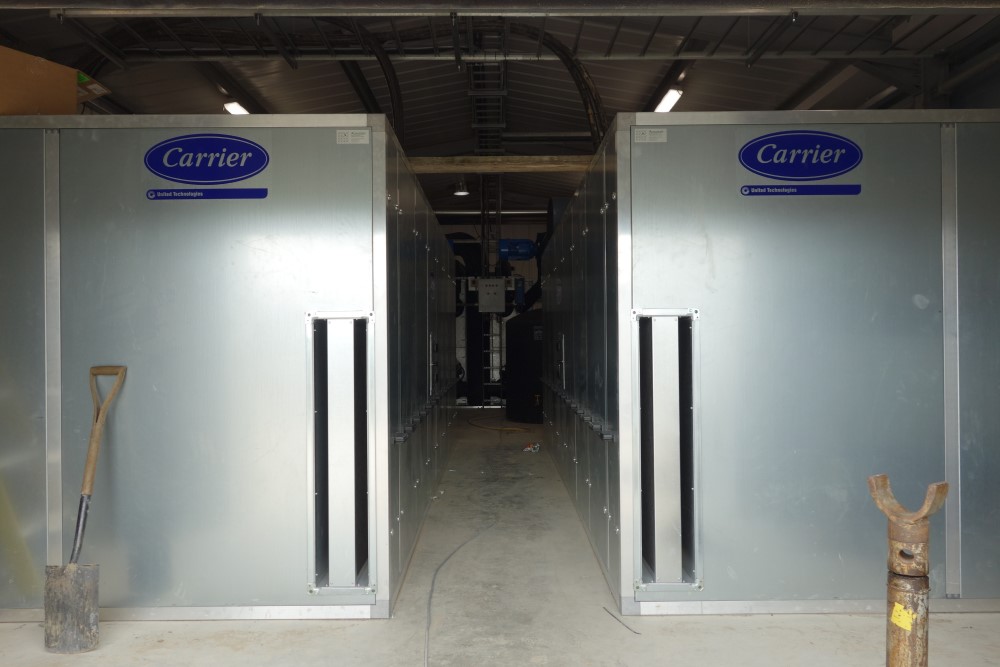Please click here to access the main AHDB website and other sectors.
- Home
- Knowledge library
- The practicalities of installing a heat-pump system
The practicalities of installing a heat-pump system
Learn about the key factors involved in installing an effective heat-pump system.
Back to: A detailed look at heat pumps and how they work
Heat pumps and water temperature
A heat pump operating at a coefficient of performance (CoP) of 2.9 or better in order to qualify for the RHI subsidy will produce water at a much lower temperature than an oil, gas or biomass boiler.
As a general rule, most heat-pump systems will produce water up to 50–55˚C. Higher temperatures are sometimes achievable by heat pumps, but as the output temperature from the heat pump increases, the CoP decreases, electricity consumption therefore increases and RHI qualification may no longer be possible.
How to manage the performance of the overall heating system
Given that heat pumps produce water at a lower temperature than an oil, gas or biomass boiler, what do you need to consider?
The lower temperatures produced by heat pumps fundamentally affect the design of the overall heating system. A heating system originally designed for flow temperatures of 80–90˚C will achieve a much lower greenhouse temperature lift if flow temperatures are around 50˚C, so to restore heating performance, one or more of the following will need to be considered:
- Installation of more heating pipes and/or larger diameter heating pipes
- Increase the flow rate by installing bigger pumps
- Boost the temperature from the heat pump (e.g. by connecting the output from the heat pump to the return connection of the conventional heating system)
How heat pumps fit into the overall heating system
As few greenhouse heating systems will be able to rely solely on a heat pump, integration with existing boiler(s), CHP, buffer system and environmental computer will normally be required. How and where the heat pump will fit into the existing system requires specialist knowledge.
The qualification and metering requirements for the RHI must be followed and a thorough understanding of heating systems, plumbing and the control system that determines how the various heat sources will be prioritised is needed to ensure the heat pump can generate the optimum RHI revenue.
The extra costs incurred when additional pipework is required and the upgrade of the existing control system to manage the heat pump(s) should not be underestimated. Furthermore, where the existing electrical supply is insufficient, potentially substantial extra costs will be incurred to provide additional electrical power.
An example of a heat-pump system

Image courtesy of NFU Energy.
Heat pumps and the RHI
There is a two-tier Renewable Heat Incentive (RHI) tariff system for ground- and water-source heat pumps, with tier 1 applying to the first 1,314 hours of operation and tier 2 for the remainder. Most greenhouse systems would expect to operate well beyond the tier 1 limit and this should be considered in the feasibility calculations. Air-source heat pumps have a single tariff for all operating hours.
The viability and economic performance of a proposed heat-pump system should be properly assessed, taking into account the site-specific background.
The RHI classes open/closed loop water-source heat pumps and ground-source heat pumps all as the same technology. Therefore, the amount of RHI received is the same for each type of system, even though installation costs vary widely.
Useful links
Information on the types of heat-pump systems
Got a question. Ask a member of the team:
Topics:
Sectors:
Tags:

